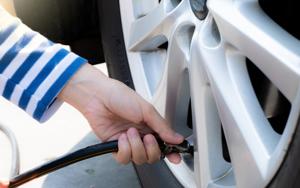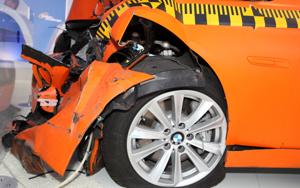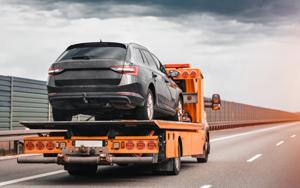The Surprising Germs Hiding Inside Your Car

Brits spend 15 days in their car each year (or the equivalent of 365 hours). So, cleaning your car is essential to keeping germs at bay. However, we understand that can often be harder than you think, particularly if you have young children and pets. Getting out of the door and into the car can often feel like a marathon in itself.
As such, Family Car Deals are sharing their top tips to keep on top of the cleanliness of your car - even for those who have a busy family life - while also sharing what germs could potentially live in your car, and how to easily remove them.
Swabbing five different vehicles revealed what bacteria could be living inside your car
Family Car Deals swabbed five different vehicles, each belonging to a different household, to understand what kind of bacteria is living inside your car. There was: a car belonging to a family of three (the family car), a car belonging to a dog owner, (the pet car), a car belonging to a young couple (the couple car), a car belonging to people that enjoy adventurous outdoor activity (the adventurer car) and a car belonging to a single man.
In the car belonging to a young family, we discovered the presence of 32,000 colony-forming units (essentially, the number of viable bacteria in a sample) of faecal streptococci.

Faecal streptococci are commonly found in the intestines of humans and animals, and their presence is an indicator of faecal contamination. These bacteria are resistant to changing conditions, meaning they are highly resilient and can survive in a range of environmental conditions. The detection of faecal streptococci suggests that faecal matter may be present, which poses a risk for spreading infections.
This pathogen can survive in other locations, besides the stomach and intestines, with this pathogen discovered on surfaces we swabbed throughout the vehicle. Those surfaces include the floor mats, door handles, steering wheel, console/infotainment area, and back seats.
The presence of faecal contamination was over 3,500% higher in the family vehicle than the second most contaminated car, the car belonging to the young couple.
While faecal streptococci can rarely cause disease, as a low-grade pathogen, they can cause urinary tract infections (UTIs) and wound infections. The results indicate that family vehicles, particularly with young children, could benefit from more routine cleaning to ensure the risk of pathogenic bacteria is reduced.
However, it’s important to note that these surfaces we discovered the bacteria on are highly accessible and, therefore, easy to clean with a regular cleaning schedule. We’ve shared our top tips below on how to quickly and effectively clean your car, even with a busy schedule.
Bacteria was present in more than half of the vehicles swabbed
In three out of the five vehicles swabbed, faecal bacteria was discovered. The presence of faecal bacteria was also found in the couple car and the pet car. The more foot traffic in the vehicle, the higher the likelihood of this bacteria.
Interestingly, the presence of the bacteria was found to be 450% higher in the couple's car than in the adventurer’s car, indicating that the more people enter and travel in the vehicle, the higher the bacteria levels.

Additional cleans - such as wiping down surfaces every week - should help keep the bacteria at bay, particularly if you have a busy family life and share your car with other family members.
Pets in the car can also lead to a higher incidence of bacteria
Three of the vehicles that contained faecal bacteria had previously had pets travel in the car, suggesting that pets could also help spread the pathogen throughout the vehicle. This bacteria can accumulate and even spread to other areas of your vehicle, especially if the pets are not restricted to one area.

To ensure this doesn’t happen, we recommend wiping down the easily accessible surfaces after every trip with your dog. To make this easier, keep microfibre cloths and antibacterial spray to hand - and sealed in a bag - in the boot of your car.
Experts recommend you clean your car this often
Do you remember the last time you cleaned the interior of your car? If it was more than one month ago, it might be too long.
Harrison Walsh, a Motoring Expert at Family Car Deals and a qualified detailer, draws on his years of experience in cleaning and restoring cars to offer drivers his recommendations.
He shares:
“A good rule of thumb is to clean your car’s interior, at least, once a month. If you travel regularly with family or pets, we recommend increasing this to twice a month. We also suggest that you wipe down any surfaces your pet touches after every use.
“A good idea would be to start with the surfaces that you are most likely to touch, such as the seats, seatbelts, the rim of the door and door handles. You could also keep cleaning supplies handy in the boot of your car to make it easier to wipe down any surfaces in your car.
“Our results show that faecal streptococci can spread throughout your vehicle, with the bacteria discovered on the floor mats, the steering wheel, the infotainment system and the back seats. This means that bacteria could easily spread from your car to your home.
“Given that our research reveals we spend 15 days, each year, in our car, bacteria can accumulate in such a short span of time, especially without regular cleaning. Bacteria also thrive in dry, cold air, meaning your vehicle could become the perfect breeding environment for germs during the colder months.”
5 top tips for cleaning your car quickly and thoroughly
Cleaning your car doesn’t need to be time-consuming or expensive. However, it is important, particularly as your car could become a hotbed for bacteria.
1. Start with clearing the clutter from your car in under 10 minutes
First things first, empty out your car of all items or rubbish. If you tend to keep items in your car that you forget to take inside the house, this is a great time to declutter. Don’t forget to check underneath the seats to collect any items that are not visible to the naked eye.
2. Vacuum the interior including the floor and the seats
Before wiping down any surfaces, start with the vacuum. Remove the floor mats and shake them outside of the car to remove any dirt. Then vacuum the mats, floor and seats. Get into the crevices of your seat to ensure you remove all dirt. If you struggle to remove dirt between the seats, a top trick is to use a toothbrush to brush those areas and remove the trapped dirt. This should take around 15-20 minutes.
3. Focus on the dashboard
The dashboard is a prime suspect for bacteria growth. Our results show that faecal bacteria can be found in areas in and around the dashboard. So, to avoid that, we recommend wiping this area down twice a month with a microfibre cloth. Start with the dashboard before moving on to areas such as the steering wheel, infotainment system, centre console and, of course, cup holders.
Once you have done that, we suggest using another cloth to go over the dashboard again, just to ensure you have removed as many germs as possible.
4. Don’t forget the inside of your windows to avoid a £1,000 fine
The inside of your windows are just as important as the outside. When was the last time you cleaned them? If you have a particularly muddy pup, dirty windows could land you in trouble. If you have an unobstructed view of the road, you could face up to three penalty points and a £1,000 fine, so always make sure clearing around the windows, and cleaning them, is part of your schedule.
5. Place the floor mats back inside AFTER a good shake
After you’ve done all of the above, place the floormats back inside, just make sure you have shaken them outside and vacuumed them properly before doing so. Your floor mats could also be hiding bacteria, including faecal streptococci, so they should always be prioritised when cleaning the interior of your vehicle.
Methodology
Family Car Deals swabbed five different household cars to reveal the everyday germs that live inside our vehicles, and how to clean them.
The cars were as follows:
- A car belonging to a single millennial with a dog - ‘pet car’
- A car belonging to a young couple - ‘couple car’
- A car belonging to a young family (mother, father and four year old son) - ‘family car’
- A car belonging to a couple who regularly enjoy hikes and walks and travel to different areas, also with the addition of a pet - ‘adventurer car’
- A car belonging to a young male - ‘single occupancy car’
Search assist
Need help finding the right car for your family?
Hi, I'm Buddy your family car search assistant. I know the one size fits all approach doesn't work when it comes to families and their cars. That's why my search tool considers the unique dynamics of every family. Whether youre a trio looking for an model, or a family of seven needing and comfort, our tool guides you every step of the way

















































